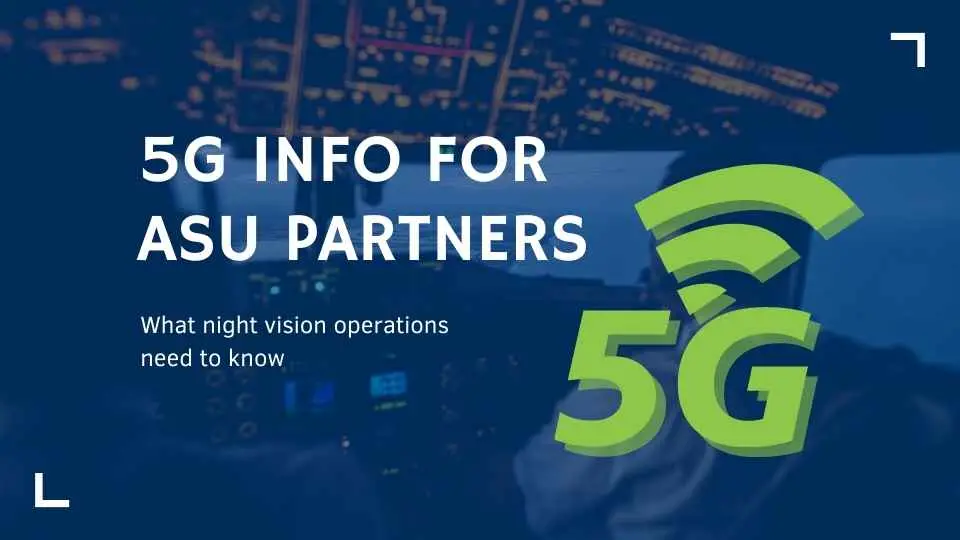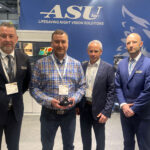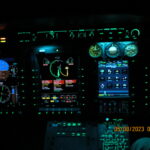ASU continues its commitment to aviation safety by providing Night Vision Solutions that Save Lives. Night Vision Goggle (NVG) operations require the use of a radar altimeter “functioning in a normal manner, and approved for use by the FAA,” per 14 CFR §91.205. ASU recognizes the importance of understanding regulations, conditions, and limitations related to NVG operations and has developed this information to help you navigate the obstacle to 5G deployment.
Helicopter Association International (HAI) petitioned the FAA and was given a Partial Grant of Exception (No. 18973, Regulatory Docket No. FAA-2021-1028). https://www.regulations.gov/document/FAA-2021-1028-0030. The exception states:
“Part 119 certificate holders authorized to conduct HAA operations under part 135, subpart L, are granted an exemption from 14 CFR §§ 91.9(a) and 91.205(h)(7) to the extent necessary to conduct part 135 operations with NVGs, including night landings and takeoffs from unimproved or off-airport sites, in areas identified by NOTAM, in which the radar altimeter is unreliable and thus may not functioning normally due to 5G C-band interference.
The FAA denies the petition for relief from §§ 135.160(a) and 135.179(a), as the petitioner has not established the need for such relief.”
There are specific conditions and limitations stated in the exemption and must be followed by operators. Certificate holders who wish to exercise the exemption must submit a Letter of Intent to the Federal eRulemaking Portal (http://www.regulations.gov), under Docket No. FAA-2021-1028.
As the 5G deployment may have significant impacts on your NVG operations, you may consider petitioning the FAA for an exemption for your organization. ASU has composed a similar petition for fixed-wing and rotor-wing NVG operations and followed the submittal process as listed below.
- Per 14 CRF §11.15, you may petition the FAA for exemption asking for relief from the requirements of the regulations that affect your operations. §11.81 lists the information you must include in your petition. https://www.ecfr.gov/current/title-14/chapter-I/subchapter-B/part-11.
- Go to https://www.regulations.gov/ and search for FAA-2007-001. This is the “Shell Docket” that lists the submission instructions. You should upload your petition letter as an attachment.
Copies of ASU’s petitions are here for your use as you see fit:
Currently, ASU (Boise, ID), is not in a 5G NOTAM area and is conducting normal operations. We do not know how long we will be “in the clear,” so we submitted the petition in an attempt to stay ahead of any changes to the BOI Airport area.
We have listed links to reference information that may be helpful as you make decisions and ensure your operations maintain the highest possible level of safety. The list is not exhaustive. Please consult your local FAA office for additional guidance.
FAA Links:
- https://www.faa.gov/
- https://www.faa.gov/newsroom/faa-statements-5g
- https://www.faa.gov/5g
- https://www.ecfr.gov/current/title-14/part-91#91.205
- https://www.faa.gov/regulations_policies/airworthiness_directives/
- Airworthiness Directive 2021-23-12 Transport and Commuter Category Airplanes
- Airworthiness Directive 2021-23-13 Various Helicopter
Federal Register Links:
We will continue to update this page as we learn more. If you have any questions, please call Chris Schoonover, Director of Aviation Services, 208-287-5399.
Stay safe!






